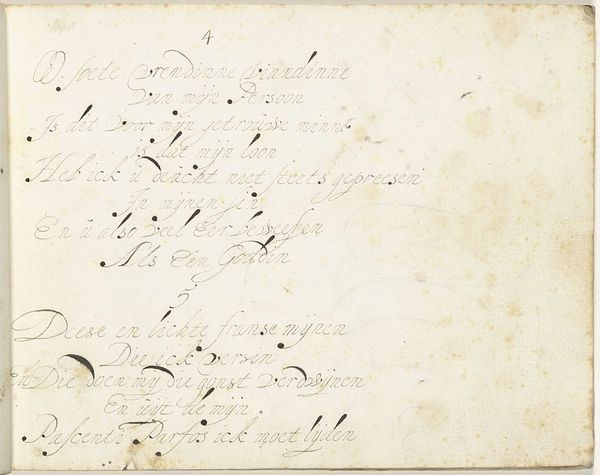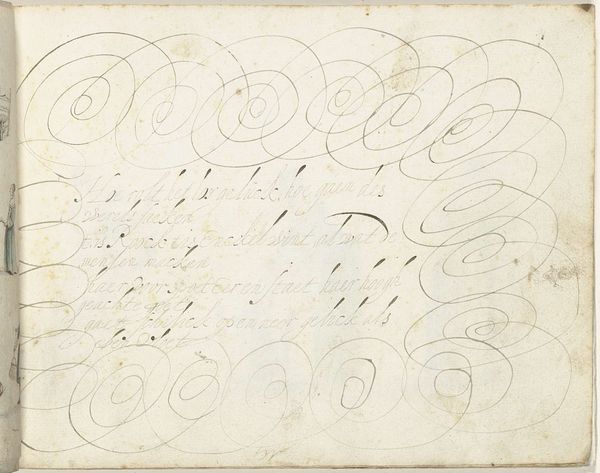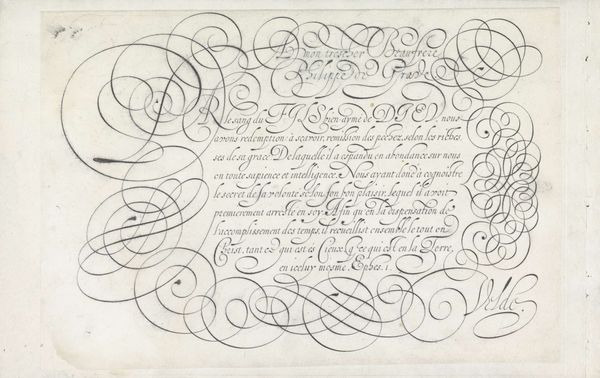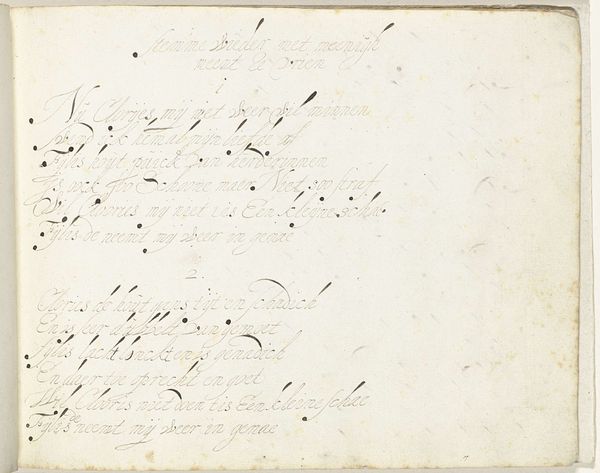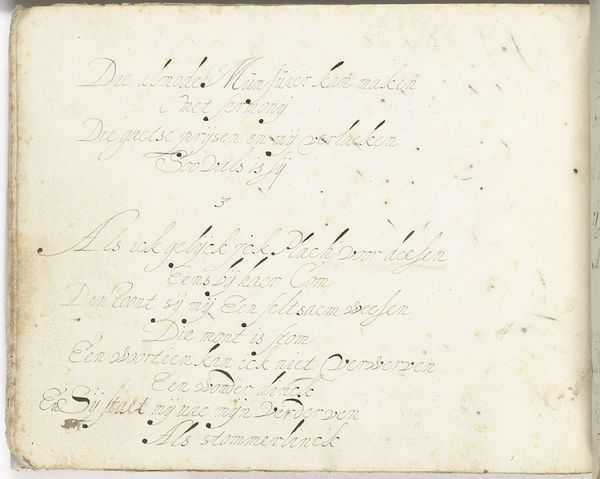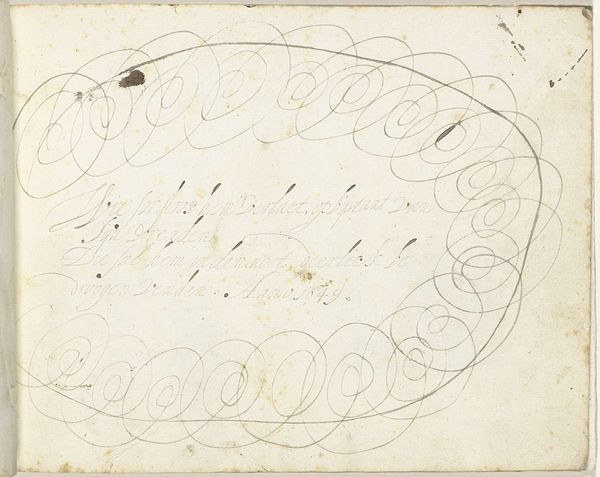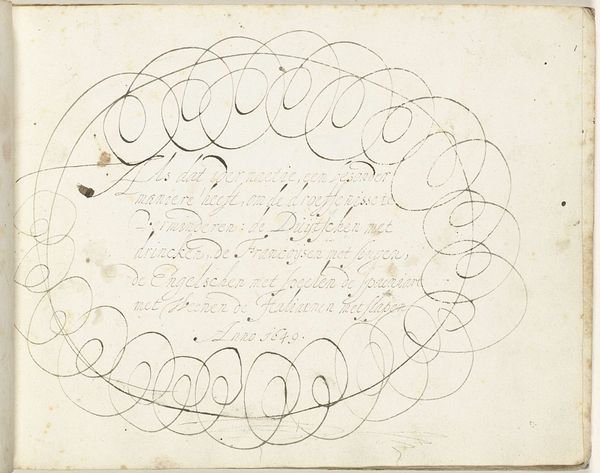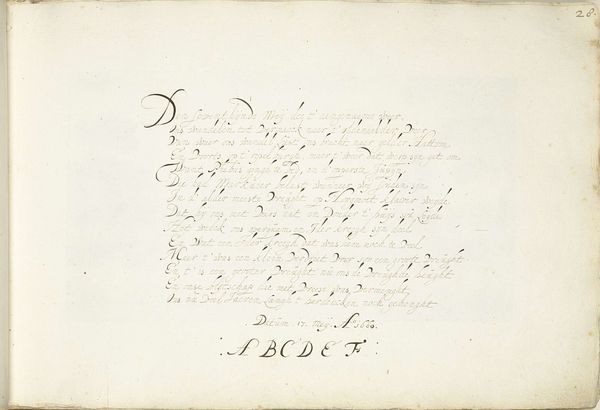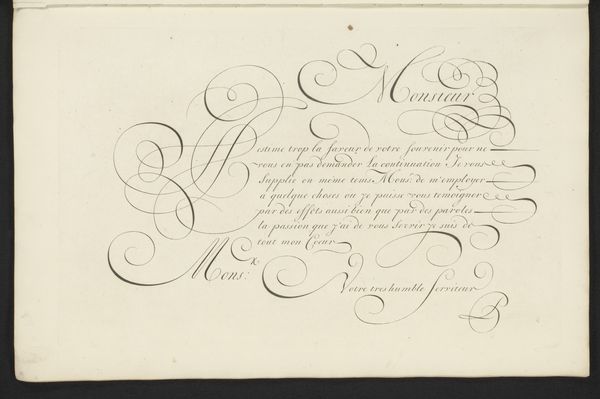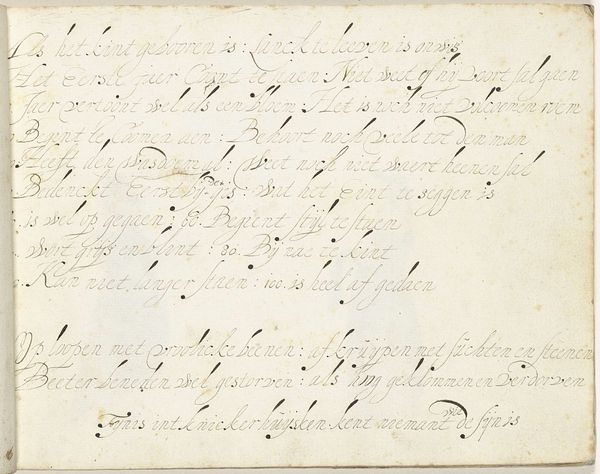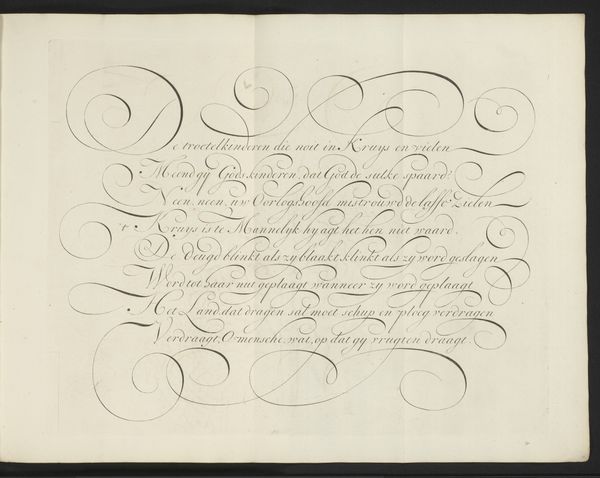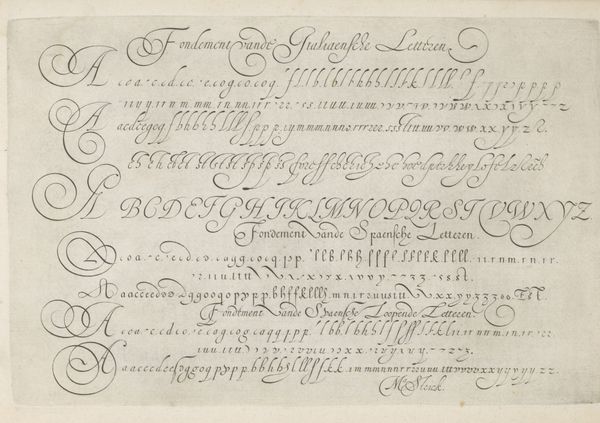
drawing, textile, paper, ink
#
drawing
#
aged paper
#
hand written
#
hand-lettering
#
dutch-golden-age
#
hand drawn type
#
hand lettering
#
textile
#
paper
#
ink
#
hand-drawn typeface
#
fading type
#
stylized text
#
calligraphic
#
genre-painting
#
calligraphy
#
small lettering
Dimensions: height 155 mm, width 211 mm
Copyright: Rijks Museum: Open Domain
Editor: This is "Poem with the Last Wish of a Woman" by Gesina ter Borch, created in 1649. It's a drawing in ink on paper. I'm struck by the delicacy of the script, but the overall impression is quite somber, like a faded memory. What do you see in this piece? Curator: The swirls immediately evoke a sense of ephemerality, framing the handwritten text as if the words are escaping, or perhaps being cradled. Consider how handwriting itself acts as a cultural artifact, a tangible link to the individual. The poem, presumably written by a woman nearing her end, becomes a potent symbol of mortality and remembrance. The "Rosen krans," or rose garland, traditionally signifies love and remembrance, and when placed within this context, becomes very poignant. Editor: That's fascinating. The swirl motifs do seem to dance around the words. Does the text itself offer clues to its symbolism? Curator: Absolutely. Ter Borch has rendered the words "Liver" (Liver), "Crijfter" (Creator), "kruytz" (Cross), and "Rosen krans" (Rose wreath), highlighting pivotal elements relating to earthly desire and Christian sacrifice that speaks to the hopes and concerns dominant during that time period. Notice how this interplay shapes the viewer’s experience through visual and literary symbols, reminding us of our collective mortality and shared hopes for the afterlife. Are there elements which strike you as especially evocative of that particular time? Editor: Definitely the overt religious references, very common during the Dutch Golden Age. I’m now thinking about how personal the act of handwriting is, it’s like she’s leaving a piece of herself behind. Curator: Precisely. And that gesture resonates powerfully across time. We're deciphering not just words but a profound expression of faith and resignation. What does the image then hold for you? Editor: A tenderly created artwork, heavy with a mix of sadness and hopeful yearning.
Comments
No comments
Be the first to comment and join the conversation on the ultimate creative platform.
